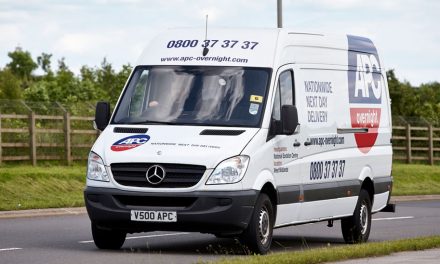
The Undeliverables
From Donald Duck to Storm Troopers: don’t let your parcel become one of The Undeliverables. By Shemin Nurmohamed, Vice President of DMT Europe for Pitney Bowes.

The Undeliverables by Shemin Nurmohamed, Vice President of DMT Europe for Pitney Bowes.
From Donald Duck to Storm Troopers: don’t let your parcel become one of The Undeliverables. By Shemin Nurmohamed, Vice President of DMT Europe for Pitney Bowes.
It’s unusual that a rare Donald Duck comic, a Cartier pen, a Storm Trooper mask and a signed copy of the Jaws film script are grouped together, but there is one thing they have in common: all were undelivered to their original recipients, and now spend their days in the Royal Mail National Returns Centre. Each year despite Royal Mail’s best efforts, 20 million items are undeliverable and end up here1. This is only a small percentage of the 15 billion items the Royal Mail handles each year, but it highlights the need for shipping accuracy. Figures from the United States Postal Service quantify undelivered items in terms of cost: undeliverable as addressed, or UAA, mail costs the Postal Service around $1.5 billion dollars, and costs mailers $20 billion.
Shippers – whether ecommerce companies, posts, mailers or simply businesses sending high volumes of parcels – have a responsibility to their customers, clients, and to their business, to ensure accuracy and efficiency with their parcel sending. However, as the volume and structure of what we send is changing, so too is the complexity fuelled by the growth in ecommerce and ever-increasing customer expectations. To put this into context:
- The global ecommerce market is forecast to grow at a CAGR of over 19% by 20202.
- Pitney Bowes Parcel Shipping Index3 forecasts a 20% increase in parcel volume by 2018
- The US ships around 11.8 billion parcels a year, followed by Japan at 9.4 billion
- Germany ships 2.9 billion parcels, the UK 2.2 billion and France 1.5 billion
- 66% of consumers now shop cross-border4, searching for wider product choice and value.
Additional key drivers generating this growth in ecommerce and resulting increase in parcel shipment pressures include:
- Accelerated delivery expectations: 96% of shoppers rate same day and next day as fast, but only 18% think the same of 5-7 day deliveries5. They do not expect to spend much on shipping to receive their goods quickly.
- Travel: the more widely we travel, the more we are exposed to a wider choice of products and look to replicate this experience online. Pitney Bowes identified a phenomenon known as ‘In-store Global. Online Local’, as 63% of cross-border shoppers visit a physical store in an overseas country, then order online from the store once they return home.
- Connected mobile device take-up: there are expected to be 6.1 billion smartphone users globally by 2020, overtaking fixed-line phones6. By 2020, smartphones are expected to account for 80% of all mobile data traffic. Mobile devices are increasingly being used within the buyer’s ecommerce journey, whether browsing, purchasing or tracking products.
- The increase in social media advertising: information from Research and Markets reveals that the current increase in companies advertising across social media channels will fuel growth, with banner ads and sponsored content driving engagement. Buyers viewing images in their feeds are entirely undeterred by items sold by overseas businesses, as they know that fast shipping methods, multicarrier platforms and advanced tracking methods means consumers buying cross-border have full visibility of their orders.
- The growing popularity of marketplaces: around half the consumers in the Global Online Shopping Study use marketplaces for all or most of their online shopping. Buyers are increasingly becoming ‘origination agnostic’, as it no longer matters to them where their purchased item originates, as long as it arrives when expected.
Undeliverable and returned items risk negatively impacting the customer experience and incurring costs. To avoid this, organisations managing high volumes of shipments must find creative ways to deliver an increasing number of packages to a much larger pool of domestic and global customers, in a way that is both fast and affordable. Enter the next generation of automated parcel sorters, powered by innovative digital platforms, running at higher speeds than ever before and including a suite of advanced capabilities to boost revenue and help futureproof businesses.
By streamlining parcel sorting management and introducing automation, shippers are able to save on time and costs; minimise the complexity generated by cross-border shipping; increase fulfilment efficiency and improve shipping accuracy, tracking and visibility. These process improvements give operations the capabilities they need to fulfill and send shipments more orders quickly and accurately.
Businesses have reached a tipping point at which they must refine and perfect their shipping strategies. Parcel automation plays a key part.
Case study
Bring Citymail Sweden AB, a private postal organisation owned by Posten Norge has reduced its operational costs and improved measures of control while consistently providing quality customer service. A focus on innovation and operational excellence including the implementation of a unique Pitney Bowes sortation solution has helped the organisation grow nearly 20% in a challenging market. Bring leverages multiple Pitney Bowes Vantage sorters at various sites, all connected to a shared network working against the same address database.
1 Source: http://www.mirror.co.uk/news/uk-news/royal-mail-national-returns-centre-1713249
2 Source: Research and markets statistics
3 Source: Pitney Bowes Global Shipping Index
4 Source: Pitney Bowes Global Shopping Study
5 Source: Deloitte Holiday Survey
6 Source: figures from Ericsson’s Mobility Report featured in TechCrunch












